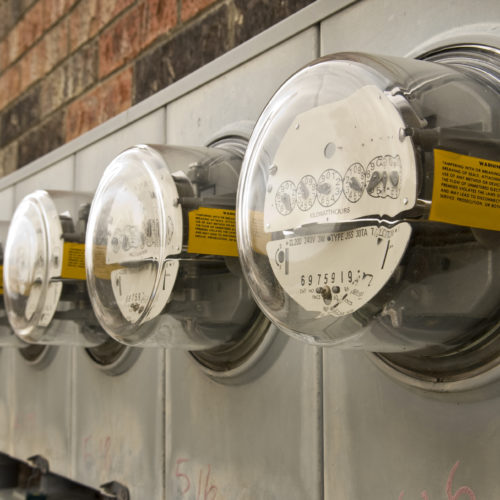
eLab Accelerator 2018
Overcoming Challenges to Renter Energy Equity
Focus is on foreground meter.

Project Objective
Develop a comprehensive capacity building and engagement plan that addresses energy cost impacts resulting from the transition to default time-of-use (TOU) rate designs, and that empowers low-income renters to manage their energy use and leverage energy saving opportunities under new utility rate structures. Plan would include research, education & outreach, and energy investment strategies.

Team Members
- Amee Raval, Asian Pacific Environmental Network
- Tory Francisco, California Public Utilities Commission
- Sara Baldwin Auck, Interstate Renewable Energy Council
- Jim Grow, National Housing Law Project
- Maria Stamas, Natural Resources Defense Council/ California Low-Income Oversight Board
- Dana Harmon, Texas Energy Poverty Research Institute
- Wayne Waite on behalf of Energy Foundation
- Carmen Bingham, Virginia Poverty Law Center
Project Description
Several states have adopted, or are in the process of adopting, new utility rate designs to accommodate the continued growth of renewable energy and other distributed energy resources (DERs) and meet state clean energy policy goals. The two key questions to be addressed by the Accelerator are: 1. What strategies and actions are needed to protect low-income renters (living in multifamily housing) from increasing energy burdens resulting from changes to utility rate design? 2. What strategies and actions are needed to preserve and/or improve the value proposition for clean energy investments in low-income multifamily rental markets? Often the solutions offered to low-income market segments reflect top-down thinking and problem solving or approaches suited to other utility customers. This project seeks to engage low-income tenant advocacy organizations and energy equity champions help to frame low-income energy challenges and, in consultation with energy professionals, fashion client-based responses and solutions to mitigate energy risks and empower low-income renters to manage and shift household energy demands. This project is supported by the Energy Foundation and is part of joint activities undertaken by the California “Energy Efficiency for All” (EEFA) Coalition. EEFA is a national partnership founded in 2013 by the Energy Foundation, Elevate Energy, National Housing Trust, and Natural Resources Defense Council dedicated to linking the energy and housing sectors together to tap the benefits of energy efficiency for millions of low-income families. Key barriers addressed by eLab Accelerator:
- Lack of tenant awareness about how TOU rate structures affect household utility costs and energy savings from DER investments. Information and/or outreach gaps impeding ability of low-income renters to navigate and select most beneficial rate options based on household energy use profiles.
- Limited capabilities to manage and shift utility demands to non-peak periods.
- Policy and market impediments to delivering integrated DER investment solutions combining renewable energy, energy efficiency, energy storage and demand management measures to tenant units.
- Absence of trusted tenant advisor/advocate in project development and implementation process.
- Review/clarify cost risks associated with time variant rate structures with later peak pricing periods.
- Identify data requirements for analysis to flag low-income market segments most vulnerable to time variant pricing
- Document educational requirements, tools, and protocols for assisting low-income renters navigate utility cost changes and avoid added cost risks.
- Determine core energy investment priorities and strategies that enable LMI households to shift demands, reduce energy use, and manage household energy habits.
- Develop renter and/or advocacy organization education and engagement plan to advance energy justice objectives to mitigate LMI energy cost risks.
Progress Made to Date (pre-Accelerator)
Completed actions and accomplishments to advance low-income energy equity objectives:
- Outreach to increase the participation of environmental justice organizations in EEFA Coalition and adoption of tenant energy equity priorities in California EEFA mission statement.
- Coordinated Coalition leadership in public proceedings on the design of the California clean energy programs to ensure that tenants have access to economic benefits from clean energy investments.
- Formation of diverse, multi-organizational project team to advance community-based outreach on tenant energy benefits protection.
- Reports and issue papers on effects of TOU rates changes and housing utility allowance policies on tenant utility costs and energy savings to identify potential risks to tenant and strategies to protect benefits.
- Next step: Capacity building to facilitate tenant engagement on utility cost and energy investment issues.
Project Background Information
- Aladdine Joroff, Energy Justice: What It Means and How to Integrate It Into State Regulation of Electricity Markets, Environmental Law Institute, November 2017. Available at: https://elpnet.org/sites/default/files/portfolio/energy_justice_-_what_it_means_and_how_to_integrate_it_into_state_regulation_of_electricity_markets.pdf.
- Texas Energy Poverty Research Institute, Energy Poverty Research Landscape Analysis: Working Paper, May 2017. Available at: http://www.txenergypoverty.org/wp-content/uploads/2017/05/TEPRI-Energy-Poverty-Research-Landscape-Analysis-May-2017.pdf.
- Wayne Waite, Sara Baldwin Auck, Mari Hernandez, Erica McConnell, and Benjamin Airth. Shifting the Burden: How Utility Rate Design Changes Are Impacting Energy Costs and Clean Energy Access for Low-Income Renters, ACEEE Summer Study Paper (Draft Pending Approval), March 20, 2018. [AVAILABLE IN MAY]
Post-Accelerator outcomes
The Renter Equity team started off Accelerator by exploring the current forces driving low-income renters' energy cost burdens and clean energy investments. These discussions helped inform the group's work for the rest of the event. The team decided to focus primarily on determining what is needed to identify impacts from increasing energy cost burdens due to planned changes to utility rate design, as well as what is needed to protect and empower low-income renters in light of these changes. To assess potential bill impacts, the team designed a plan to expand existing studies to include the analysis required to target vulnerable populations. The team also developed a list of leverage points in the existing system that could help advance their work. With data needs and leverage points in mind, the group developed various strategies to use going forward. These strategies include engagement with tenant and tenant organizations, use of the broader California energy ecosystem, organization coordination and support, and landlord/building owner outreach. The team also hopes to see continued data gathering efforts on program impact, support for clean energy investments in these communities, and use of findings from the California story to inform other states' efforts around new utility rate design.